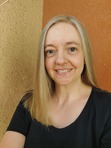Adventures and Journeys, Ancient and Current
Kathleen Flanagan Rollins is the author of Misfits and Heroes: West from Africa and Past the Last Island, the first two books in the Misfits and Heroes series on ancient explorers. Today she tells us about the epic journey she took in order to create the series and the real journeys she's basing the books on.
The differences between the two books
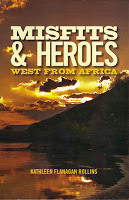 Actually I wrote most of Past the Last Island before I wrote Misfits and Heroes: West from Africa, but when it came time to publish one of them, I felt Misfits and Heroes: West from Africa was in better shape, so I went with that. Also, I felt it was “meatier,” especially with the African story-telling included.
Actually I wrote most of Past the Last Island before I wrote Misfits and Heroes: West from Africa, but when it came time to publish one of them, I felt Misfits and Heroes: West from Africa was in better shape, so I went with that. Also, I felt it was “meatier,” especially with the African story-telling included.When I went back to Past the Last Island, I contacted an editor to get her input. That proved to be an interesting and complicated arrangement. Being a hopeless pleaser, I tried to follow all of her advice. That meant no “head-hopping” – jumping from one character’s point of view to another, which I’m frequently guilty of doing, and providing more show and less tell. Also, she hated all adverbs as well as any form of the verb to be, though I argued with the latter. Let’s face it: sometimes there’s nothing like the copulative verb. Consider “To be or not to be.”
In any case, I rewrote 75% of the book trying to improve it. Then I became addicted to editing. I deleted a whole section (about forty pages), shortened almost every chapter, and moved and reworked other chapters repeatedly, not always for the better. After almost a year of that, I realized the endless editing wasn’t really helping, so one night I declared the book finished, though it still carries traces of edits on top of previous edits. A minor character in the Albert Camus classic The Plague wanders through the novel coming up with different variations of a single sentence describing a girl he saw, but it’s never quite right. I suspect that was a reflection of Camus himself and perhaps every serious writer. However, as my sister, a professional artist, said, “There comes a time when you stop working on it and sign it.”
Emotional and physical misfits
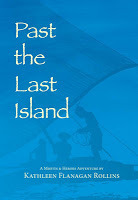 The main characters in Misfits and Heroes: West from Africa are emotionally scarred, some through personal tragedy and some by events they’re forced to witness. Several of the characters in Past the Last Island are physically flawed. Nulo is a dwarf. Aeta is a “short person.” Hao is a hunchback. Half of Sula’s face is crushed in. Each becomes both a gift and a liability to the group. Nulo is a dreamer, useful for warnings of disaster but limited as a fighter. Hao is a navigational genius but emotionally unstable (based on Magellan’s original navigator who was so unstable he wasn’t allowed to join the expedition even though he’d planned out most of the voyage). Aeta is haunted by the belief that she carries death with her, and perhaps she does.
The main characters in Misfits and Heroes: West from Africa are emotionally scarred, some through personal tragedy and some by events they’re forced to witness. Several of the characters in Past the Last Island are physically flawed. Nulo is a dwarf. Aeta is a “short person.” Hao is a hunchback. Half of Sula’s face is crushed in. Each becomes both a gift and a liability to the group. Nulo is a dreamer, useful for warnings of disaster but limited as a fighter. Hao is a navigational genius but emotionally unstable (based on Magellan’s original navigator who was so unstable he wasn’t allowed to join the expedition even though he’d planned out most of the voyage). Aeta is haunted by the belief that she carries death with her, and perhaps she does. Despite these flaws, the group becomes as close as family during their impossible journey across the open sea. It’s only after they arrive in the New World, at the end of the book, that the group begins to fall apart. Some readers find their relationship too “nicey-nice,” but I wanted the opposite of The Lord of the Flies. If you found yourself in a world with no wars, no political boundaries, and no other people competing for amazingly abundant resources, how would you react? Wouldn’t each person become more valuable because there were so few? Perhaps that rarity would also color the relationships between men and women. These characters are, in some ways, the innocents.
In the third book of the series, the two groups meet. More accurately, more than the two groups meet, and things get very complicated. In the fourth book, a group from what is now northern Spain joins the others. This group brings the Solutrean Age technology, especially bifacial points and atlatls (spear throwers), eyed needles, painting and textile decoration, as well as a lot of trouble. The two main characters are definitely not too nice.
So that’s the mix so far.
And what’s the thread that binds all of these?
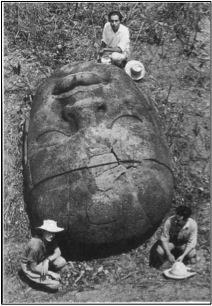 Despite their differences, which are many, all of these characters want very much to make a new life somewhere else, yet once they get there, they realize it’s not enough; they want to meet others. No one group is large enough to flourish on its own. So they seek out other people, but they bring more than themselves to the meeting. New languages, new cultures, new perspectives, new diseases, new problems are also part of the mix. The thread that binds them together is that they are all heroes, not because they have super-powers or because they’ve always been applauded as champions but because they rise to each challenge they face, even the ones that require forgiveness. That’s why I like spending time with them.
Despite their differences, which are many, all of these characters want very much to make a new life somewhere else, yet once they get there, they realize it’s not enough; they want to meet others. No one group is large enough to flourish on its own. So they seek out other people, but they bring more than themselves to the meeting. New languages, new cultures, new perspectives, new diseases, new problems are also part of the mix. The thread that binds them together is that they are all heroes, not because they have super-powers or because they’ve always been applauded as champions but because they rise to each challenge they face, even the ones that require forgiveness. That’s why I like spending time with them. As it turns out, 14,000 years ago is not that long ago
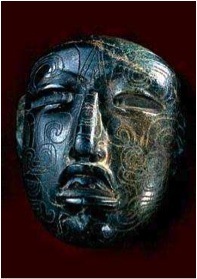 I find ancient explorers fascinating, but I’m learning that my novels, set 14,000 years ago, couldn’t possibly deal with the oldest explorers. New research shows that people, or at least the ancestors of modern humans, were finding their way to what is now England 500,000 years ago! Hominids were hunting with spears topped with worked points 460,000 years ago! Controlled fire? Over a million years ago. First jewelry? 82,000 years ago. First mixture of paint? 80,000 years ago. (Check out the Misfits and Heroes blog for more of this, with sources).
I find ancient explorers fascinating, but I’m learning that my novels, set 14,000 years ago, couldn’t possibly deal with the oldest explorers. New research shows that people, or at least the ancestors of modern humans, were finding their way to what is now England 500,000 years ago! Hominids were hunting with spears topped with worked points 460,000 years ago! Controlled fire? Over a million years ago. First jewelry? 82,000 years ago. First mixture of paint? 80,000 years ago. (Check out the Misfits and Heroes blog for more of this, with sources). Even in the Western Hemisphere, we know that one of the earliest human settlements in the Americas was at Pedra Furado in eastern Brazil, which has been dated between 33,000 and 56,000 years ago. In the layer dated 33,000 years ago, archaeologists found pieces of pottery and examples of rock art. What’s closest to eastern Brazil? West Africa. In fact, in 2012, a young woman rowed from West Africa to South America, solo, in 70 days. So, with the currents and prevailing winds, the Senegal area seemed like a logical choice for some of the early explorers in Misfits and Heroes: West from Africa. Also, early Olmec art features gigantic basalt sculptures of very African-looking individuals. Perhaps Mesoamerica saw several migrations from West Africa.
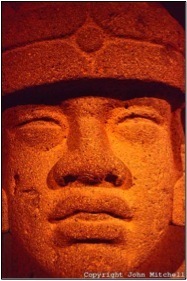 However, there is also a very strong Asian and Pacific Island look to Olmec art, so in Past the Last Island, I imagined the greatest open water navigators in the world crossing the Pacific Ocean and ending up in the New World, just across the Isthmus of Tehuantepec from the group from West Africa. That combination may well have sown the seeds of the greatest civilizations of ancient Mesoamerica.
However, there is also a very strong Asian and Pacific Island look to Olmec art, so in Past the Last Island, I imagined the greatest open water navigators in the world crossing the Pacific Ocean and ending up in the New World, just across the Isthmus of Tehuantepec from the group from West Africa. That combination may well have sown the seeds of the greatest civilizations of ancient Mesoamerica.
Published on April 10, 2013 00:14
No comments have been added yet.

